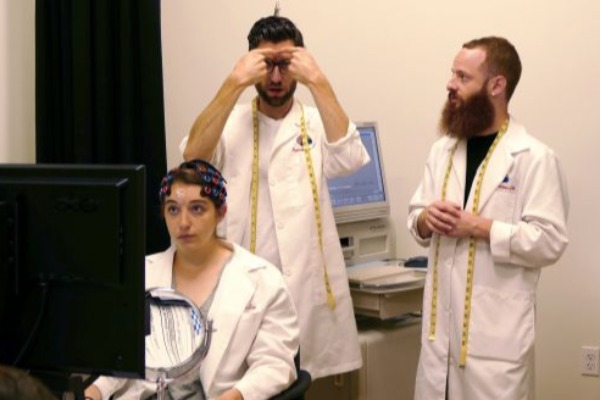Publication a milestone for Ph.D. program

The Ph.D. in Educational Neuroscience (PEN) program marked a significant accomplishment with two students’ first publication in a peer-reviewed research journal.
Under the guidance of Dr. Laura-Ann Petitto, scientific director of the Brain and Language Laboratory, Adam Stone (lead author) and Geo Kartheiser, both third-year PEN students, published "Fingerspelling as a Novel Gateway into Reading Fluency in Deaf Bilinguals" in October 2015 in PLOS One, an open-access multidisciplinary research journal.
Petitto is also co-PI and science director of the National Science Foundation Science of Learning Center for Visual Language and Visual Learning, VL2. She and co-PI Dr. Thomas Allen, director of VL2 hub Early Education Literacy Lab, EL2, co-authored the article. Dr. Peter Hauser, associate professor at NTID, is also a co-author.
The paper discusses the integral role of fingerspelling in bilingual ASL/English language acquisition and builds on research by Petitto on age of bilingual exposure as a strong predictor of bilingual language and reading mastery, as well as her discoveries about the underlying cognitive capacities that involve accurate word decoding and automatic word recognition.
Fingerspelling provides deaf bilinguals with important cross-linguistic links between sign language and written language, such as English, the authors write. In order to investigate these links, the authors used data from the VL2 Toolkit Psychometric Study from Allen’s EL2 to investigate the relationship between age of ASL exposure, ASL fluency, and fingerspelling skill on reading fluency in deaf college-age bilinguals.
They found that fingerspelling, above and beyond ASL skills, contributes to reading fluency in deaf bilinguals. Fingerspelling, manually and in print, mutually facilitates and develops greater accuracy in word decoding and automatic word recognition. Subjects’ rapid and accurate decoding of ASL fingerspelling predicted rapid and accurate decoding of print words, suggesting a common, underlying decoding skill that develops in different modalities, the authors write.
"These findings have significant implications for developing best practices to teach reading to deaf and hard of hearing children," Stone said.
Click to learn more about Gallaudet's Ph.D. in Educational Neuroscience program.